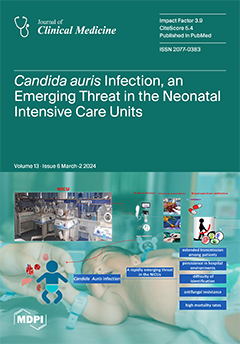Background: Endovascular techniques have gained preference over peripheral arterial bypass surgery due to their minimally invasive nature; however, endovascular treatments often show limited efficacy in arterial segments with a high atherosclerotic load. The use of atherectomy devices enables the removal of calcified plaque material and may promote arterial wall remodeling. This study assessed the technical success, safety, and feasibility of the BYCROSS
® atherectomy device in femoropopliteal lesions.
Methods: This single-center, retrospective cohort study analyzed elective patients undergoing BYCROSS
® atherectomy for chronic peripheral arterial disease from March 2022 to May 2023. Patient data, procedural details, and outcomes were retrospectively collected from electronic patient records. The primary performance endpoints of this study were technical success, complications, and patency rates. Primary safety endpoints included 30-day and short-term major adverse limb events (MALEs), major adverse cardiovascular events (MACEs), and mortality rate.
Results: The study included 19 patients (median age, 71 years; 63% male) with Fontaine class IIb (26%), III (21%), or IV (53%). The BYCROSS
® atherectomy device was used to treat 22 limbs in the femoropopliteal tract, of which 11 lesions (50%) were occlusions and 11 were stenoses, with a median length of 24 cm (interquartile range: 17–38). Technical success was achieved in all cases: 4.5% required atherectomy only, 50% required additional balloon angioplasties, 41% required balloon angioplasties and stenting, and 4.5% required segments only stenting. Additional treatment of below-the-knee arteries was performed in 12 patients. Procedurally related complications (not limited to the use of the BYCROSS
® device) occurred in 23% of limbs, including distal embolization and laceration. At 30 days, mortality was 5%, the MACE rate was 11%, and the MALE rate was 0%. The observed mortality rate was not directly related to the procedure. Patency (<50% restenosis at duplex ultrasound) was 83% at 30 days.
Conclusions: The use of the BYCROSS
® atherectomy device for the treatment of femoropopliteal lesions appears to be safe and feasible, with high technical success and low MALE and MACE rates in a challenging population with long-segment femoropopliteal lesions. Long-term follow-up in larger patient series is needed to confirm these findings and to determine the durability of this technique.
Full article






